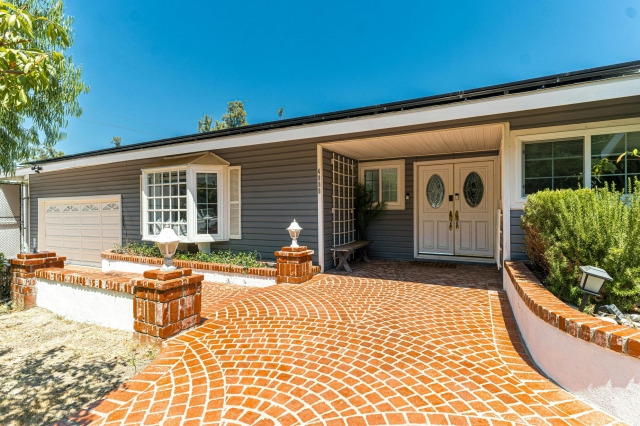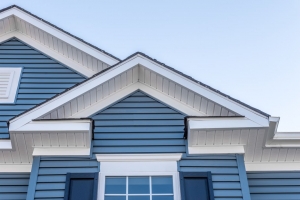Outdoor renovations can transform the look and functionality of your home, but even small mistakes can lead to expensive setbacks. From misjudging your budget to overlooking hidden risks underground, planning carefully is essential.
Homeowners often focus on design and materials but forget that groundwork is just as important. Before adding patios, fences, or new landscaping, identifying utilities and fragile underground systems should be a top priority.
To reduce these risks, many homeowners now rely on specialized solutions. Choosing hydrovac services ensures safe and precise excavation, protecting both your property and your budget.
In this article, we'll explore practical ways to prevent mistakes in outdoor home renovations.
Begin with a Solid Renovation Plan
Every successful outdoor renovation starts with a well-thought-out plan. Without one, costs can quickly spiral out of control, and critical details may be overlooked. A clear roadmap helps homeowners anticipate expenses, choose the right materials, and avoid last-minute changes that often add unnecessary stress.
According to industry estimates by Angi, a home exterior remodel can cost as little as $1,800 or soar past $100,000. On average, most homeowners spend around $10,500. The final price often depends on whether you're refreshing surfaces or removing existing materials to replace them with high-end products.
By setting a realistic budget and aligning it with your design goals from the start, you'll minimize financial surprises. This also helps keep your renovation on track.
Select Durable and Weather-Resistant Materials
Selecting materials built to endure harsh weather is crucial for any outdoor renovation. Durable, weather-proof choices help minimize upkeep and ensure your improvements last longer. Among all exterior projects, roofing stands out as the most crucial. A sturdy roof not only protects the home but also preserves its overall value.
The Spruce highlights several roofing choices. Asphalt composite shingles are the most common in North America, lasting 20 to 30 years and allowing easy replacement of damaged pieces. For flat or low-pitch roofs, EPDM membranes offer 20 to 35 years of durability when properly maintained. Metal roofs are another excellent choice, often lasting 30 to 50 years and fully recyclable when replaced.
By carefully selecting materials that balance durability, cost, and aesthetics, homeowners can avoid premature repairs. This ensures their renovations remain both practical and visually appealing for decades.
Hire Qualified and Reliable Contractors
One of the biggest mistakes homeowners make is hiring the wrong people for the job. Skilled contractors bring expertise, quality craftsmanship, and accountability, which directly impact the success of outdoor renovations. Cutting corners on labor may save money upfront but often results in poor workmanship and expensive repairs later.
According to Indeed, exterior remodelers in the U.S. earn an average of $25.70 per hour, about 15% higher than the national average. Pay rates also vary by city. For instance, remodelers in Plano, TX, can make over $63 per hour, while those in Denver, CO, average around $45. Higher rates often reflect greater expertise and demand.
Investing in reliable professionals may increase costs initially. However, it helps ensure the work is completed correctly, safely, and on schedule, ultimately protecting the value of your home.
Safeguard Underground Utilities Before Construction
Outdoor projects like building decks, installing pools, or adding new fencing often require digging into the ground. Beneath the surface, however, lie critical utility lines that, if damaged, can cause dangerous accidents and costly delays.
Instead of relying on manual digging or heavy machinery, many homeowners now use hydrovac services to safely expose underground infrastructure. Biolein states that this method combines pressurized water with suction to uncover utilities without breaking them. It's especially useful in residential neighborhoods, where gas and water lines often run close together.
Taking this extra step not only prevents expensive repairs but also keeps your renovation project on schedule and compliant with local safety codes.
Ensure Proper Drainage Systems Are in Place
One of the most overlooked aspects of outdoor home renovations is ensuring proper drainage. Without it, water can accumulate near your foundation, saturate landscaping, and even cause flooding in basements or crawl spaces.
According to the Insurance Information Institute, water damage and freezing account for 27.6% of homeowners insurance losses. The average claim cost for these damages is $13,954. This highlights just how costly poor drainage can be.
To avoid these issues, invest in well-designed gutters, downspouts, and grading that directs water away from your home. Additionally, consider installing French drains or other landscaping solutions to manage runoff. Taking these precautions during your renovation not only protects your property but also saves thousands in potential repairs. This makes it a smart, proactive step in any outdoor project.
Balance Design with Long-Term Maintenance Needs
When planning outdoor renovations, it's important to balance aesthetic appeal with long-term upkeep. Choosing low-maintenance materials and durable landscaping options can prevent frequent repairs and reduce ongoing costs.
For example, selecting weather-resistant decking, native plants, or high-quality stone surfaces minimizes the need for constant replacement or intensive care. Although prioritizing aesthetics is tempting, planning for easy upkeep from the beginning keeps your outdoor area attractive and practical over time.
Thinking ahead in this way prevents costly repairs and effort later, allowing you to enjoy your space with peace of mind.
Frequently Asked Questions
Are permits or approvals required for common outdoor renovations?
Yes, many outdoor renovations require permits or approvals. Projects like decks, fences, pools, or major landscaping changes often need local government or homeowners' association approval. Securing permits ensures compliance with safety codes, avoids fines, and prevents costly legal or reconstruction issues later.
What hidden costs should homeowners be aware of during exterior upgrades?
Homeowners should watch for hidden costs like permit fees, unexpected repairs, landscaping adjustments, utility relocations, and material upgrades. Labor overruns, drainage fixes, and seasonal delays can also add up. Planning for these potential expenses helps avoid budget surprises during exterior renovation projects.
How do I prioritize which outdoor renovation project to tackle first?
Prioritize outdoor renovations by assessing urgency, impact, and budget. Focus first on projects that address safety, structural integrity, or prevent damage, such as drainage, roofing, or foundation repairs. Once critical needs are met, tackle aesthetic or non-essential upgrades for a balanced, cost-effective approach.
Plan Smart and Protect Your Investment
Outdoor renovations can greatly enhance your home's beauty and functionality, but careful planning is essential to avoid costly mistakes. Choosing durable materials, hiring reliable contractors, and protecting underground utilities help safeguard your investment.
Proper drainage, low-maintenance designs, and anticipating hidden costs ensure your project stays on budget and stands the test of time. By taking these steps, you can enjoy a safe, attractive, and long-lasting outdoor space for years to come.






